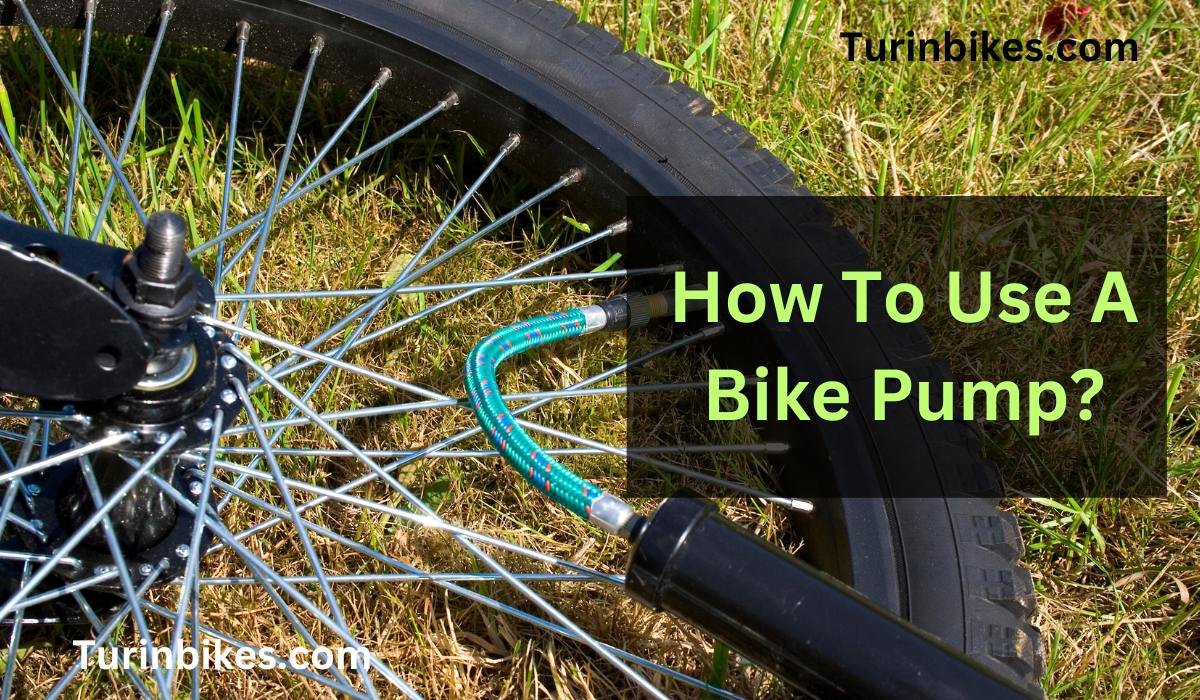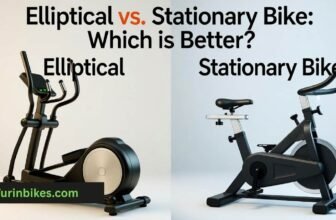
Embarking on a cycling journey is exhilarating, but what do you do when your tires seem too soft for comfort? That’s where mastering the art of how to use a bike pump comes into play. Whether you’re grappling with a Presta valve or acquainting yourself with a brand-new floor pump, we’re here to guide you. In this article, we’ll demystify the process, ensuring your bicycle tires are perfectly inflated for an optimal ride. So, before you pedal away into the sunset, let’s delve deep into the nuances of pumping up those tires. Gear up, and let’s get those wheels ready for adventure!

How to Use a Floor Bike Pump
- Preparation: Before you start, ensure your bike tire is accessible, and the pressure gauge on your pump is clear to read.
- Identify the Valve: Determine whether your tire has a Schrader valve or a Presta valve. This will influence how you attach the pump.
- Ready the Nozzle: Adjust the pump head or nozzle to match your valve type. For a Schrader valve, it should fit directly, while a presta valve might require you to unscrew its top.
- Attaching the Pump: Place the pump head securely onto the valve. Ensure it’s snug to prevent any little air leaks.
- Secure the Connection: Lift the pump lever to lock the pump in place, ensuring a tight seal.
- Pumping: Begin to pump. Whether you’re inflating a mountain bike or a road bike tire, keep an eye on the pressure gauge. Aim for the recommended psi or tire pressure.
- Finishing Up: Once you’ve reached the desired pressure, lower the pump lever and swiftly remove the pump from the valve to prevent air loss.
- Check the Tire: Give your tire a quick squeeze to ensure it’s firm. If you have a flat tire, this step ensures you’ve pumped enough air.
- Bike Maintenance: Regularly checking and adjusting your tire pressure is a crucial part of bike maintenance every cyclist should adopt.
- Storage: Store your floor pump in a cool, dry place, ready for its next use.

How to Use a Hand Bike Pump?
- Identify the Valve: Determine the type of valve your bike has. It’s either a Presta valve or a Schrader valve. This distinction is crucial as each requires a different pump head.
- Preparation: Remove the plastic cap covering the valve. If your valve has a plastic dust cap, take it off.
- Adjust the Pump: Ensure you use the correct pump head for your valve type. Some pumps have dual heads for both Schrader or Presta valves, so pick the correct one.
- Open the Valve: For presta valves, you’ll need to open the valve. Unscrew the small nut at the top, but don’t remove it. For Schrader valves, you can skip this step.
- Attach the Pump: Place the pump head onto the valve and lock it in place. If there’s a lever, push the lever back to secure.
- Start Pumping: Begin to pump air using the piston. Depending on your tire and pump, you might have a “high volume or “high pressure setting. Use “high volume for mountain bike tires and “high pressure for road tires.
- Monitor Pressure: Keep an eye on the air pressure as you pump. The recommended pressure (in per square inch or psi) is usually printed on the sidewall of your tire.
- Detach the Pump: Once you’ve reached the desired pressure, unlock and swiftly remove the pump head. Reattach any plastic dust cap or valve cap you removed earlier.
- Check the Tire: Ensure the tire feels firm and that you’ve pumped enough air, especially if you’re using tubeless tires.
- Storage: Store your hand bike pump in an accessible spot on your bike or in your backpack for any on-the-go inflation needs.
Bike Pumps We Recommend
What To Do If Your Tire Isn’t Holding Air
Discovering a tire that won’t retain air can be a cyclist’s nightmare. One common culprit is a compromised nozzle hole. Over time, the continuous attachment and detachment of pumps can wear out this area. If you’ve left several pumps attached for extended periods, this could exacerbate the issue. To troubleshoot, hold the nozzle upright and inspect for any visible damage. If the issue isn’t with the nozzle, it might be time to consider adding sealant to the pneumatic tyre. Sealants can close minor punctures and provide a temporary fix until a more permanent solution is found. Remember, maintaining the correct pressure is crucial, especially for cyclocross enthusiasts and the avid cyclist.
What To Do If You Don’t Have A Pump At Home
If you’re at home without a bicycle pump, don’t fret. While it’s ideal to pump a bike tire with a proper tool, in a pinch, you can seek alternatives. Consider borrowing a hand pump from a neighbor or using a general-purpose pump. If those aren’t options, local stores often have affordable bicycle pumps available. Remember, it’s essential to use a bicycle pump that works well to ensure your ride is smooth and safe.
Can you use a bike pump on a car tire?
Yes, but it’s time-consuming and not as efficient as a car tire pump.
Can I use a bike pump to inflate a pool?
It’s possible but not practical due to the large volume of pools.
Can I use a bike pump for a ball?
Yes, with the appropriate needle attachment.
What types of bike pumps are available?
There are several types of bike pumps, including floor pumps, hand pumps, mini pumps, and CO2 inflators.
How do I know which valve type my bike has?
Bikes typically have either a Presta or Schrader valve. Presta valves are narrower and have a locking nut at the top, while Schrader valves resemble car tire valves.
How much air should I pump into my bike tire?
The recommended tire pressure is usually indicated on the tire’s sidewall. Always ensure you pump within this range.
Can I use a bike pump for other inflatables?
Yes, many bike pumps come with multiple nozzles or adapters that can be used for other inflatables like balls or air mattresses.
Is it possible to overinflate a bike tire with a pump?
Yes, overinflation can damage the tire. Always adhere to the recommended pressure range indicated on the tire.
Why is the pump gauge not showing any pressure when I start pumping?
It might take a few pumps before the gauge starts registering, especially if the tire was completely flat. If the gauge still doesn’t show any pressure, it might be faulty.
Can I use a bike pump for tubeless tires?
Yes, but it’s essential to ensure the pump can deliver a burst of air to seat the tire bead properly on tubeless setups. Some pumps are specifically designed for tubeless tires.
Meet Sachin Kumar, an avid cyclist and bike enthusiast with a passion for two-wheeled adventures. At our Turinbikes site, Sachin shares expert insights, thrilling ride experiences, and tips for fellow bike lovers.






